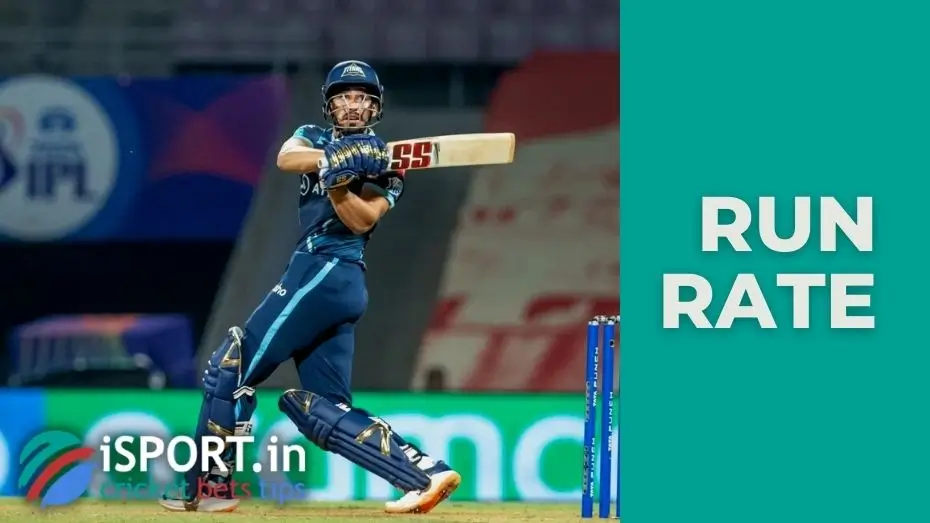Run rate

Run rate – in the broadest sense of the word, the average number of runs scored by the batting side in one over. Includes both the runs made by the batsmen and the Extras awarded to the batters (that is, additional runs that were earned due to a violation of the rules by the attacking side).
It is worth considering the Run rate indicators may vary significantly depending on the format of a particular match. So, for example, test games are characterized by lower speeds, so currently, the average number of runs here ranges from 3-3.5. On the contrary, in the limited overs format, players are strictly limited by time frames and therefore strive to score points as quickly as possible. Therefore, if in the 70s the Run rate in ODI started from 4, now 5 is considered average, and 7–8 is excellent.
In T20I, the Run rate is from 8 to 9 runs per over. Historically, the recorded maximum did not exceed 13-14 runs per over, and yet this makes it the fastest format in terms of a set of runs. The ideal score of 36 has never been achieved since it implies a one-hundred-percent hit on each ball with no mistakes by the batting side.
In the second of the mentioned formats (that is, limited overs) this rate is needed primarily to correctly compare the actual number of runs scored with the number of runs needed to win the match. As a rule, a team strives to increase this indicator as much as possible in the last overs, but current Powerplays aim to level the indicators in the starting and ending innings.
Before the advent of the so-called Duckworth-Lewis method, the Run rate was one of the main criteria for determining the winner of a match (primarily in cases when the game was interrupted or not completed due to bad weather or insufficient lighting). In addition, the Run rate is still used for a clearer distribution of places in the standings, for example, if two teams are equal in the number of wins and losses.
The following terms are often associated with Run rate:
- Required run rate;
- Net run rate;
- Economy rate.
The Required run rate refers to the missing number of runs that the batting team must score to win the match (or the total number of runs that the batters must score, divided by the remaining number of overs). As a rule, the Required run rate is displayed on the scoreboard closer to the end of the game, that is, in the second inning in the format of limited overs and in the fourth – in test competitions.
Net run rate is a counting method most commonly used in the format of limited overs to identify the winner, when both teams have scored the same number of points. It is partly similar to the method of determining the strongest in the conditions of a goalless draw in football.
In the most general sense, the match Net run rate is the average number of runs per over scored by the team, minus the average number of runs per over issued by the opposing team. Accordingly, the tournament Net run rate is calculated according to the same principle but based on the total number of runs for the entire period of the competition. At the same time, the Net run rate can be either positive (the team is ahead of the opponent/rivals in terms of the speed of the set of runs) or negative (if the team is inferior).
Interestingly, many find the Net Run Rate indicator difficult to understand, which also does not allow to get a fair idea of the game level of a particular team. On the one hand, the higher it is, the better, but at the same time, this state of affairs speaks primarily about the good work of the bowlers and not about how successful the team as a whole is.
As for the Economy rate, it is used primarily to evaluate the effectiveness of bowlers, not batsmen, since it represents the average number of runs conceded per over. In fact, this indicator allows you to get an idea of how many runs the attacker gave to the opponents, so the lower it is, the better his statistics are.
This is interesting: The top of the Run rate in ODI is held by the New Zealanders. The West Indies national team is in second place, and the British are in third place.
